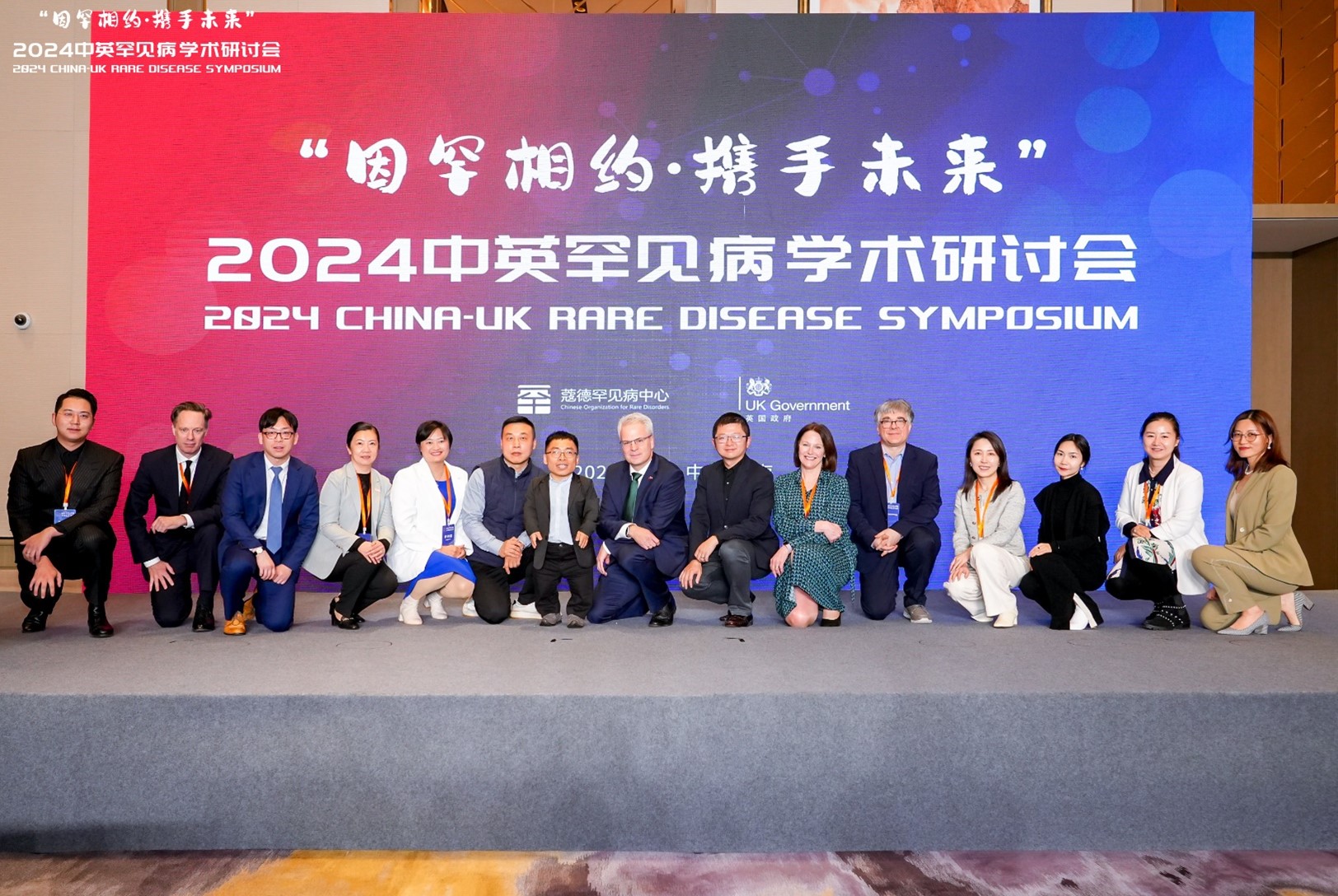Published by PMLive. March edition 2023
Rare diseases are diverse groups of diseases each defined as afflicting fewer than one in 2,000 people. Some, like haemophilia, cystic fibrosis, or childhood cancers (such as osteosarcoma), attract considerable public attention, but most don’t. There are currently more than 7,000 different recognised rare diseases globally, and this figure is growing, with approximately one in 17 of the population likely to be affected by a rare disease.
The number of patients with each condition may vary widely, with massive practical healthcare implications. A rare disease afflicting one in 5,000 people means 200 sufferers per million inhabitants, but ultra-rare disease may affect as few as one person per million. The prevalence impacts all aspects of medical management, from the likelihood of an early and correct diagnosis to the availability of specialised doctors and the chances that treatment options are available, effective and commercially viable.
The impact of rare diseases on patients and carers also varies widely, but many of them require lifelong treatment, with standard-of-care treatment outcomes ranging from easily manageable to a loss of quality of life, or palliation. Even when treatment is available, some diseases have debilitating or fatal outcomes. Genetic diseases are typically rare, manifest at an early age and progress to a spectrum of debilitating manifestations that put a massive strain on the parents and carers; the effect for them is life-changing.
New approaches
Historically, the small case numbers of rare diseases have led to their neglect. Moreover, the complexity of these diseases makes research difficult. In recent years, the biotech industry has joined with regulators and medical authorities to find more rapid and cost-effective treatments, with progress including:
– Increased understanding of the cause of rare diseases, which has enabled development of efficient treatments
– Improvements in diagnostic methods, which have made a huge impact on those rare diseases with a single gene cause. New and sophisticated assays give quick and reliable results and are widely available at reasonable prices, so routine testing of all newborns is now a realistic option
– Incentive offers from regulators such as the Food and Drug Administration (FDA), the European Medicines Agency (EMA) and the Medicines and Healthcare products Regulatory Agency (MHRA) to address unmet medical needs
– The development of rare disease management, driven by patient and carer groups and providing motivation for academic researchers, industry, regulatory authorities and healthcare professionals (HCPs) to deliver novel treatments. They provide an invaluable amount of first-hand knowledge to assist in clinical development, as well as insight to politicians on the burden of these diseases for the prioritisation of the issues
– Greater patient involvement, leading to improved approaches for patient assessment of drug efficacy and safety
– Better cooperation between stakeholders in the past decade, removing the ‘bubble’ mentality. The research world is better connected and all stakeholders understand that success in rare disease treatment requires collaboration, including working with partners that are developing mobile phone apps for monitoring diseases, or using ‘soft’ parameters like behavioural changes for patient assessment
Developing treatments
Step 1
Given that most rare diseases had either limited or only palliative treatment options a few decades ago, the first step is to develop drugs that specifically address each disease for there to be a significant improvement for patients. The growing understanding of the mechanisms involved in rare diseases and ability to design drugs that affect the cause has been a breakthrough in advancing patient care.
This is particularly evident in the case of lysosomal storage diseases (LSDs), a large group of rare diseases where accumulation of metabolic intermediates and their storage in lysosomes causes the disease. Identification of the specific enzyme involved, which is either defective or absent, has led to the development of a first-generation treatment option: enzyme replacement therapy (ERT). ERT provides the patient with the recombinantly produced missing enzyme and is now widely available for several LSDs.
Step 2
If a treatment for a rare disease is available, this is not the end of the story. In some cases, a second generation of drugs is already under development. These second-generation compounds are usually on the forefront of scientific advances, and innovative technologies are often used first in the field of rare diseases as development costs are lower.
In the case of LSDs, consideration would need to be given to what an improvement to replacing the missing enzyme would look like. As current enzyme replacement is typically administered by IV, and given that the drug is a protein, it will not cross the blood-brain barrier. This is a problem, especially for lysosomal storage diseases where there may be severe progressive cognitive impairment over the lifetime of the patient. Whereas current available treatment can stabilise some functions (eg, heart and lung), any CNS effects of the disease are not addressed.
Thus, the next generation of treatment would see drugs distributed to and made available in all relevant tissues, and those drugs in development appear to solve the problem by targeting increased replacement enzyme in previously inaccessible tissues, as well as potentially accessing poorly perfused tissues, like cartilage.
Stumbling blocks
Laid out like this, it seems simple but the tasks at hand are not trivial. Several challenges for novel rare disease drug development must be overcome, with two specific issues dominating progress.
Performing clinical trials
The nature of rare disease inherently means that only a small number of patients exist, making clinical trials difficult to perform and statistical assessment challenging. On one hand the trial needs to be large enough to provide meaningful results; on the other hand the trial needs to be feasible. In many cases, the situation is complicated by the very young benefiting most from treatment, with a need for the therapeutic benefit to be assessed against a background of childhood development. This has led to the adoption of the multi-domain responder index (MDRI) approach, which measures a larger number of outcomes, each corrected for baseline to come to a clinical valid evaluation. This approach is becoming increasingly more common and has been accepted by the FDA, EMA and MHRA for approvals.
Cost
Costs are always a challenge in drug development, but in rare diseases the matter is more critical. HCPs are under pressure to reduce the cost explosion in medical spending. This means that reimbursement options need careful assessment.
Developing drugs for rare diseases means developing a very specific drug for a small number of patients, so costs for drug development will contribute to the cost of goods to a much larger extent than for drugs developed to treat significant numbers of patients, such as for blood pressure or cholesterol levels. Reducing costs is currently achieved mainly by scientific advancement and the willingness of all parties to include them. The introduction of MDRI has been helpful in reducing costs by obtaining more meaningful data from a small number of patients, and the FDA was quick to adopt this into its regulations.
Our approach
The Actigen group of companies has a long experience identifying and developing human antibodies. When the technology was new, these antibodies were used predominantly in the treatment of cancer. With recent advances, the range of disease areas has expanded and now includes very different indications, ranging from ophthalmology to infectious diseases. In addition, antibodies may now be combined, either with other antibodies or completely different molecules for even more innovative applications. Specifically, these combinations can help existing drugs target tissues they have not been able to enter before and this approach is especially exciting for the future treatment of rare diseases.
The future
Rare disease is a complicated field requiring novel approaches and perpetual learning. Innovation continues to contribute to earlier disease diagnosis, more efficacious therapy and more meaningful clinical trial design. The potential availability of specifically designed treatments for selected patients should improve access to better drugs, resulting in superior outcomes.
There are challenges, but also increasing numbers of success stories, making working in the field most rewarding.
References:
https://www.gov.uk/government/publications/england-rare-diseases-action-plan-2022/england-rare-diseases-action-plan-2022
https://www.fda.gov/industry/medical-products-rare-diseases-and-conditions/designating-orphan-product-drugs-and-biological-products
https://www.ema.europa.eu/en/human-regulatory/overview/orphan-designation-overview


